Search Result
Results for "
brain-permeable
" in MedChemExpress (MCE) Product Catalog:
4
Isotope-Labeled Compounds
| Cat. No. |
Product Name |
Target |
Research Areas |
Chemical Structure |
-
- HY-100614
-
-

-
- HY-16691
-
-
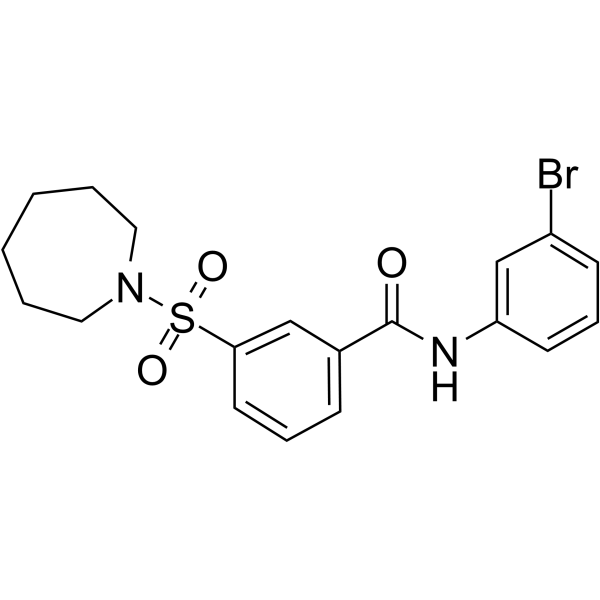
-
- HY-137440
-
|
TAK-994 free base
|
Orexin Receptor (OX Receptor)
|
Neurological Disease
|
|
Firazorexton (TAK-994 free base) is an orally active, brain-permeable orexin type 2 receptor (OX2R) agonist. Firazorexton has the potential to improve narcolepsy like symptoms .
|
-
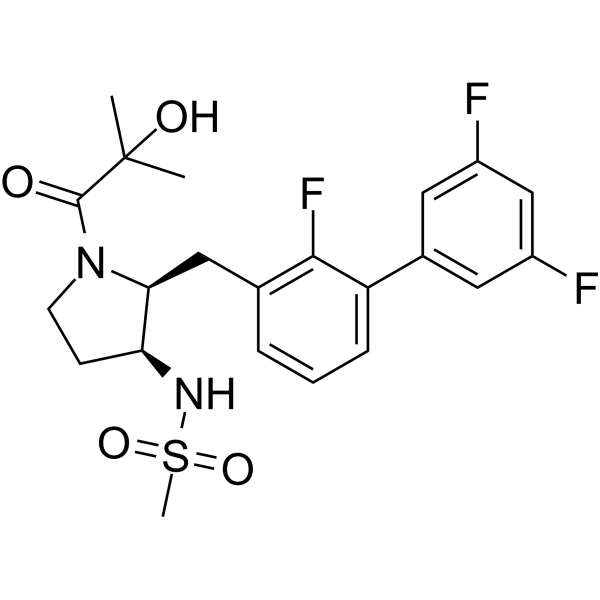
-
- HY-149966
-
|
|
HDAC
|
Inflammation/Immunology
|
|
PB131 is a selective and brain-permeable HDAC6 inhibitor with high binding affinity (IC50: 1.8 nM). PB131 has potent anti-inflammatory activity. PB131 can be used for research of inflammation, especially neuroinflammation .
|
-
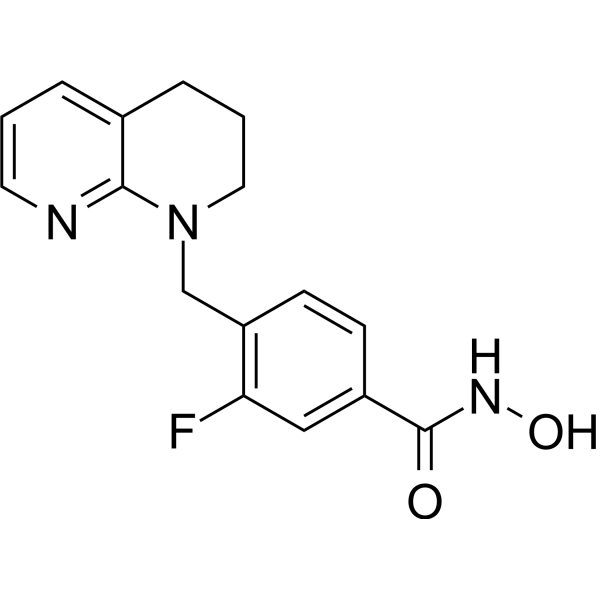
-
- HY-136094
-
-
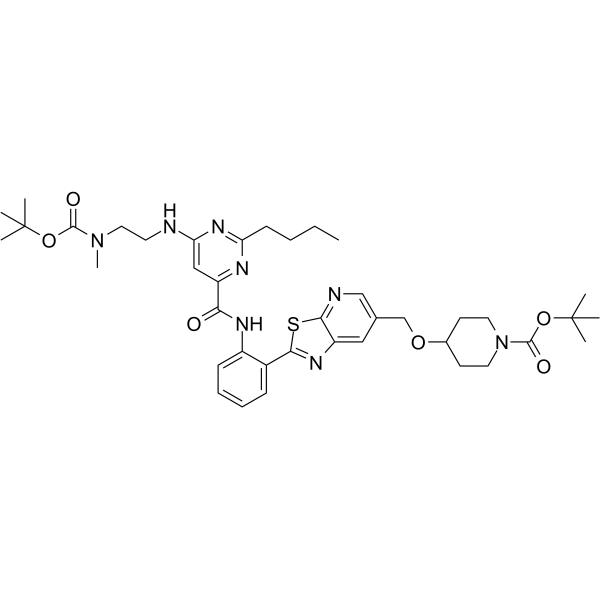
-
- HY-15262
-
|
|
Sirtuin
|
Neurological Disease
Metabolic Disease
Cancer
|
|
SRT 2104 is a first-in-class, highly selective and brain-permeable activator of the NAD + dependent deacetylase Sirt1, increases Sirt1 protein, but shows no effect on Sirt1 mRNA. Used in the research of diabetes mellitus and Huntington’s disease .
|
-
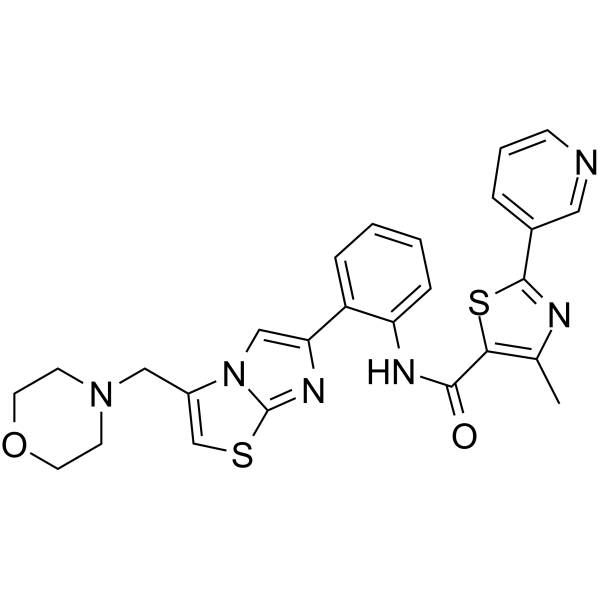
-
- HY-131036
-
|
|
Monoamine Oxidase
|
Neurological Disease
|
|
MAO-IN-M30 dihydrochloride is an orally active, brain-permeable, and brain selective irreversible MAO-A (IC50=37 nM) and MAO-B (IC50=57 nM) inhibitor. MAO-IN-M30 dihydrochloride is a potent iron chelator and radical scavenger. MAO-IN-M30 dihydrochloride has a neuroprotective effect against Dexamethasone-induced brain cell apoptosis. MAO-IN-M30 dihydrochloride also exhibits neurorestorative activity in post MPTP and lactacystin models of Parkinson's disease . MAO-IN-M30 (dihydrochloride) is a click chemistry reagent, it contains an Alkyne group and can undergo copper-catalyzed azide-alkyne cycloaddition (CuAAc) with molecules containing Azide groups.
|
-
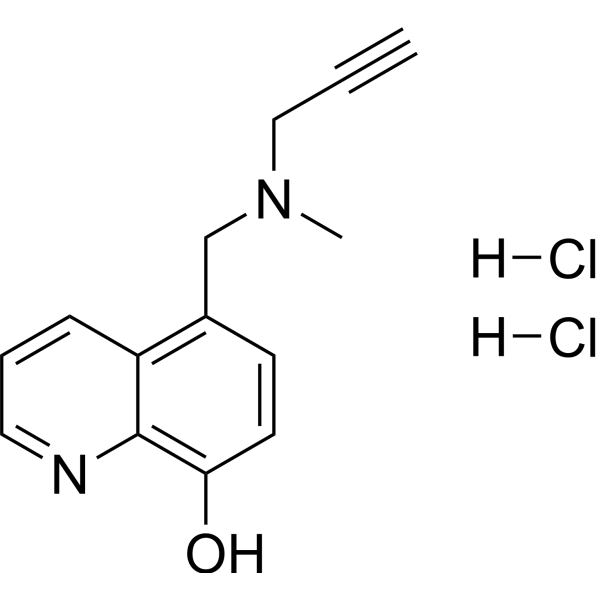
-
- HY-149202
-
|
|
PGE synthase
|
Inflammation/Immunology
|
|
UT-11 is a potent and brain-permeable microsomal prostaglandin E synthase-1 (mPGES-1) inhibitor with IC50s of 0.10 μM and 2.00 μM for inhibiting PGE2 production in human (SK-N-AS) and murine (BV2) cells, respectively .
|
-
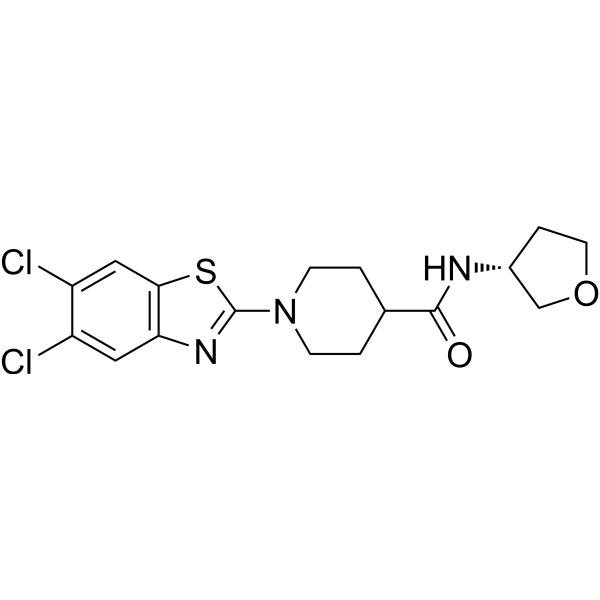
-
- HY-14552
-
|
SB 223412
|
Neurokinin Receptor
|
Neurological Disease
Endocrinology
|
|
Talnetant (SB 223412) is a selective, competitive, brain-permeable NK3 receptor antagonist with a Ki of 1.4 nM in hNK-3-CHO cells. Talnetant is 100-fold more selective for hNK-3 relative to the hNK-2 receptor and has no affinity for hNK-1. Talnetant can be used in schizophrenia-related studies .
|
-
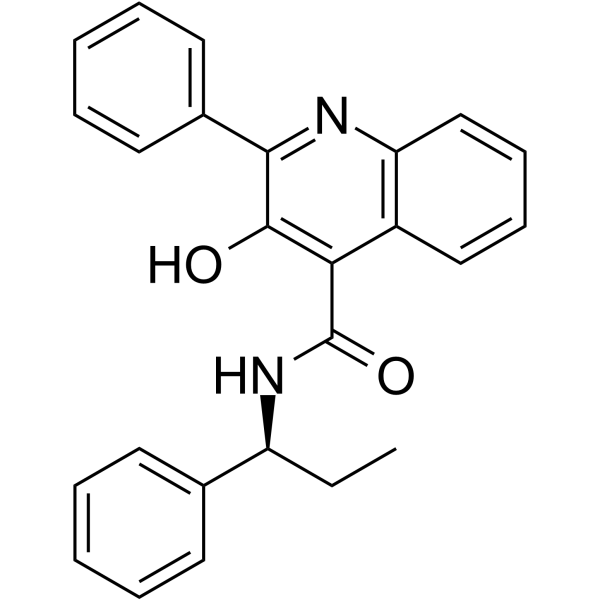
-
- HY-14552A
-
|
SB 223412 hydrochloride; SB 223412-A
|
Neurokinin Receptor
|
Neurological Disease
Endocrinology
|
|
Talnetant (SB 223412) hydrochloride is a selective, competitive, brain-permeable NK3 receptor antagonist with a Ki of 1.4 nM in hNK-3-CHO cells. Talnetant hydrochloride is 100-fold more selective for hNK-3 relative to the hNK-2 receptor and has no affinity for hNK-1. Talnetant hydrochloride can be used in schizophrenia-related studies .
|
-

-
- HY-W686216
-
|
|
Ferroptosis
|
Neurological Disease
|
|
VK-28, a brain-permeable iron chelator, inhibits both basal and Fe/ascorbate-induced mitochondrial membrane lipid peroxidation, with an IC50 of 12.7 μM. VK-28 exhibits significant neuroprotective effects on ICV-6-OHDA. VK-28 can be used for the research of Parkinson’s disease and other neurodegenerative diseases .
|
-

-
- HY-18679
-
|
|
mGluR
|
Neurological Disease
|
|
TC-N 22A is a potent, selective, orally active and brain-permeable mGlu4 PAM with an EC50 of 9 nM in human mGlu4-expressing BHK cells. TC-N 22A is less active (EC50>10 μM) in agonist and PAM model at mGlu 1, 2, 3, 5, and 7 receptors. TC-N 22A has the potential for research of CNS disease in vivo .
|
-
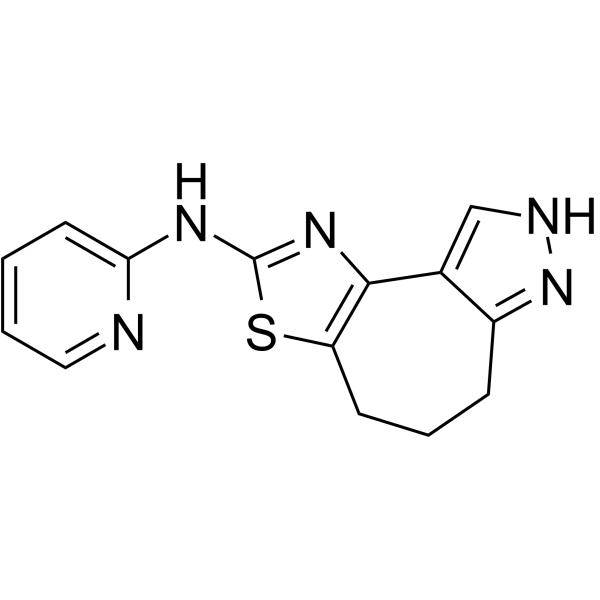
-
- HY-133011
-
|
|
nAChR
|
Neurological Disease
|
|
nAChR agonist 1 is a potent, brain-permeable, and orally efficacious positive allosteric modulator of α7 nicotinic acetylcholine receptor (α7 nAChR). nAChR agonist 1 has the EC50 of 0.32 µM in a Ca 2+ mobilization assay (PNU-282987-induced, FLIPR based) in human IMR-32 neuroblastoma cells that endogenously express α7 nAChR. nAChR agonist 1 can be develpoped for the treatment of Alzheimer’s disease .
|
-

-
- HY-158115
-
|
|
Molecular Glues
Raf
MEK
|
Cancer
|
|
NST-628 is a brain-permeable MAPK pathway molecule glue that inhibits RAF phosphorylation and MEK activation. NST-628 also binds RAF and prevents the formation of BRAF-CRAF and BRAF-ARAF heterodimers, effectively inhibiting the RAS-MAPK pathway. NST-628 inhibits RAS- and RAF-driven cancers and demonstrated potent inhibition in mutant KRAS, NRAS, BRAF class II/III, and NF1-mutant tumors .
|
-
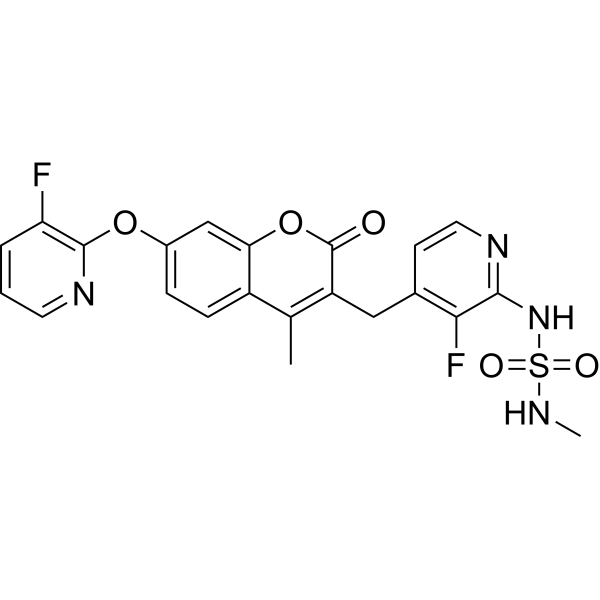
-
- HY-13438
-
|
|
Beta-secretase
|
Cancer
|
|
AZD3839 free base is a potent and selective orally active, brain-permeable BACE1 inhibitor (Ki=26 nM). AZD3839 free base shows 14 and >1000-fold selectivity against BACE2 and cathepsin D, respectively. AZD3839 free base exhibits dose- and time-dependent lowering of plasma, brain, and cerebrospinal fluid Aβ levels in mouse, guinea pig, and non-human primate. AZD3839 free base can be used for the research of Alzheimer's disease .
|
-

-
- HY-16936
-
|
|
|
|
|
JH-II-127 is an orally active, highly potent, selective and brain-permeable LRRK2 inhibitor, with IC50s of 6, 2 and 48 nM for wild-type LRRK2 and LRRK2-G2019S and mutant LRRK2-A2016T. JH-II-127 inhibits Ser935 phosphorylation in all tissues of mice, including the brain. JH-II-127 can be used in the study of parkinson's syndrome .
|
-
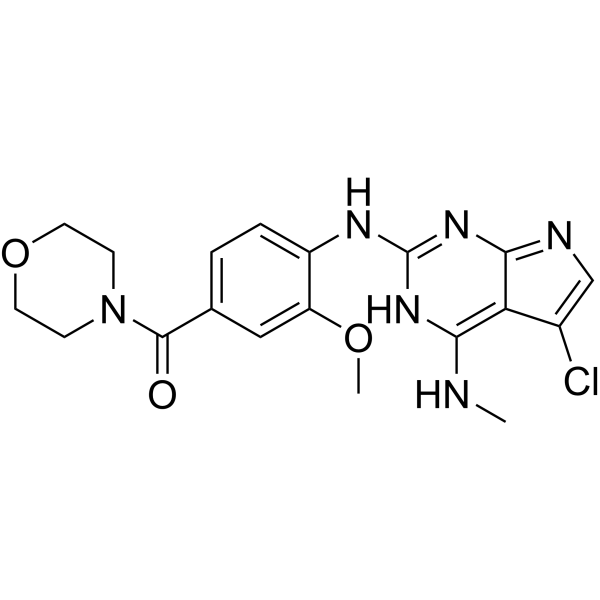
-
- HY-155088
-
|
|
mGluR
|
Metabolic Disease
|
|
MK-8768 is a highly potent, orally bioavailable and selective class of mGluR2 negative allosteric modulator (IC50 of 9 .6nM) with excellent brain permeability.
|
-

-
- HY-133555
-
|
|
mGluR
|
Neurological Disease
|
|
mGluR2 antagonist 1 is a highly potent, orally bioavailable and selective class of mGluR2 negative allosteric modulator (IC50 of 9 nM) with excellent brain permeability .
|
-
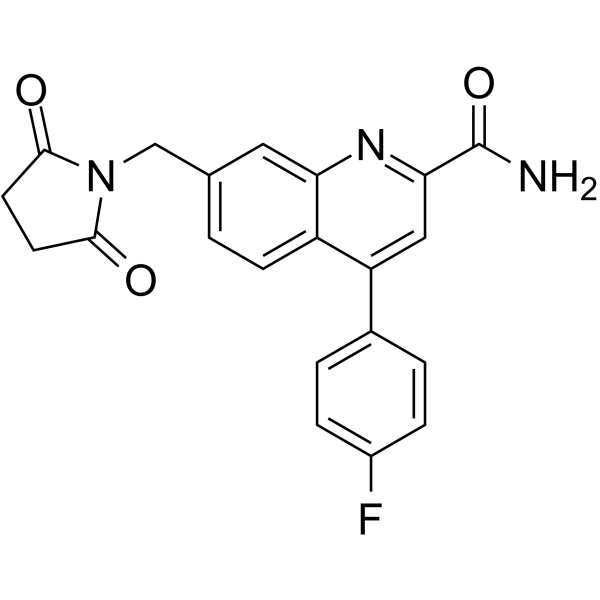
-
- HY-U00046
-
|
|
COX
|
Inflammation/Immunology
|
|
Apyramide is an anti-inflammatory agent (NSAID) and behaves as a proagent of indomethacin (HY-14397). Indomethacin is a potent, blood-brain permeable and nonselective inhibitor of COX1 and COX2.
|
-
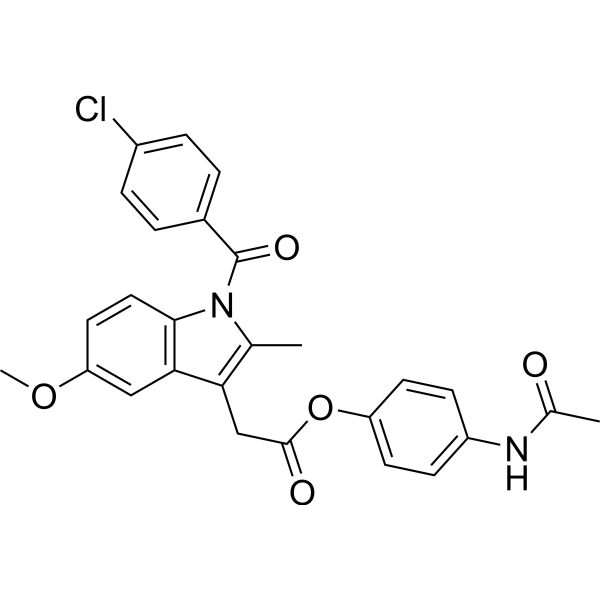
-
- HY-108920
-
|
4-Cl-KYN; AV-101
|
Others
|
Neurological Disease
|
|
4-Chlorokynurenine is a prodrug of a NMDA receptor antagonist. 4-Chlorokynurenine has orally active and blood-brain permeability that can be used for the research of depression .
|
-
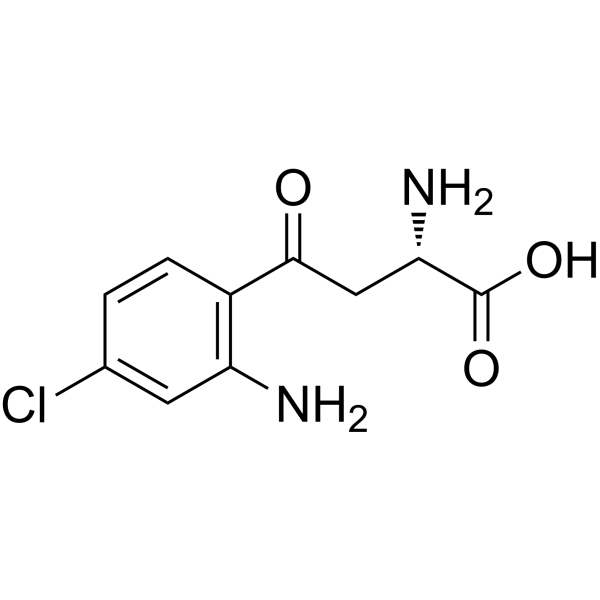
-
- HY-107409
-
|
|
iGluR
|
Neurological Disease
|
|
GNE 5729 is a brain permeable positive allosteric modulator of NMDAR, with an EC50 of 37 nM for GluN2A, 4.7 and 9.5 μM for GluN2C and GluN2D, respectively.
|
-

-
- HY-10547
-
|
AR-12; PDK1 inhibitor AR-12
|
PDK-1
Autophagy
|
Cancer
|
|
OSU-03012 (AR-12; PDK1 inhibitor AR-12) is a blood-brain permeable PDK-1 inhibitor with an IC50 of 5 μM .
|
-

-
- HY-146101
-
|
|
iGluR
|
Neurological Disease
|
|
NMDA receptor antagonist 5 (Compound 10e) is a potent, brain permeable and non-toxic NMDA receptor antagonist. NMDA receptor antagonist 5 can be used for neurological disorder research .
|
-
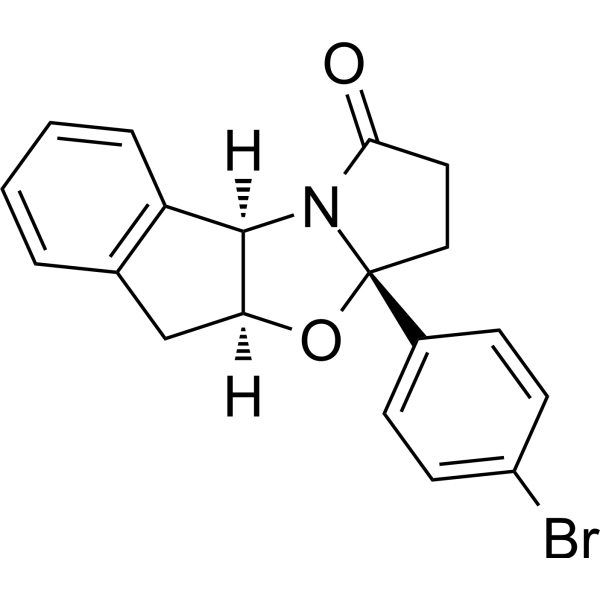
-
- HY-108337
-
|
|
iGluR
|
Neurological Disease
|
|
GNE-0723 is a brain permeable positive allosteric modulator of NMDAR, with an EC50 of 21 nM for GluN2A, 7.4 and 6.2 μM for GluN2C and GluN2D, respectively .
|
-
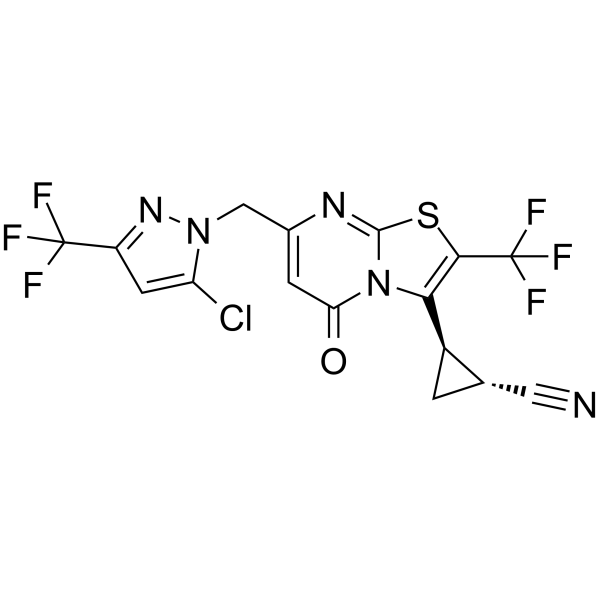
-
- HY-B0762
-
|
O-Acetyl-L-carnitine hydrochloride; ALCAR hydrochloride
|
Endogenous Metabolite
|
Neurological Disease
|
|
Acetyl-L-carnitine (O-Acetyl-L-carnitine) hydrochloride is a blood-brain permeable acetyl ester of the amino acid L-carnitine found in the body. Acetyl-L-carnitine hydrochloride is often used as a dietary supplement, and exibits anti-stress-related psychiatric disorders .
|
-
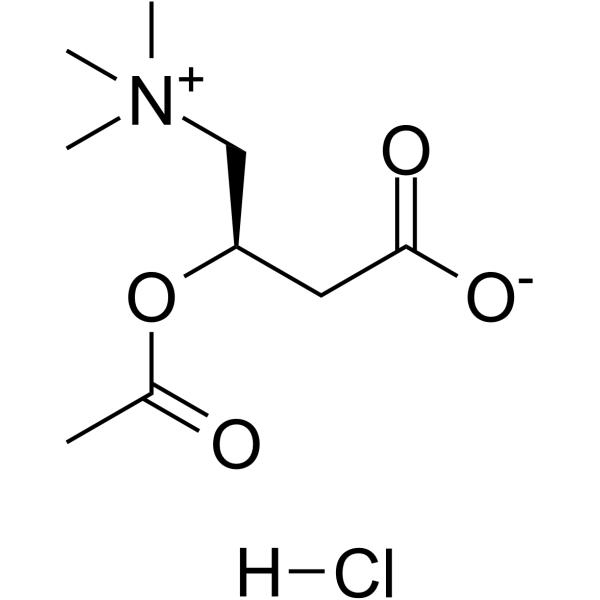
-
- HY-155079
-
|
|
EGFR
|
Cancer
|
|
DZD1516 is a potent and selective HER2 inhibitor (IC50=0.56 nM) with good blood-brain permeability. DZD1516 exhibits antitumor activity in CNS and subcutaneous xenograft mouse models .
|
-
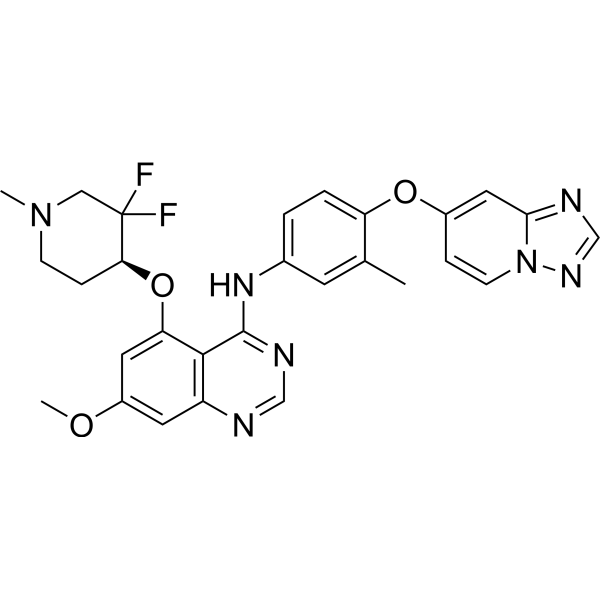
-
- HY-157132
-
|
|
FAAH
|
Neurological Disease
|
FAAH-IN-8 (compound 11) is a competitive inhibitor of FAAH with an IC50 value of 6.7 nM and a Ki value of 5 nM. FAAH-IN-8 has high blood-brain permeability and a significant antioxidant profile with no neurotoxicity .
|
-
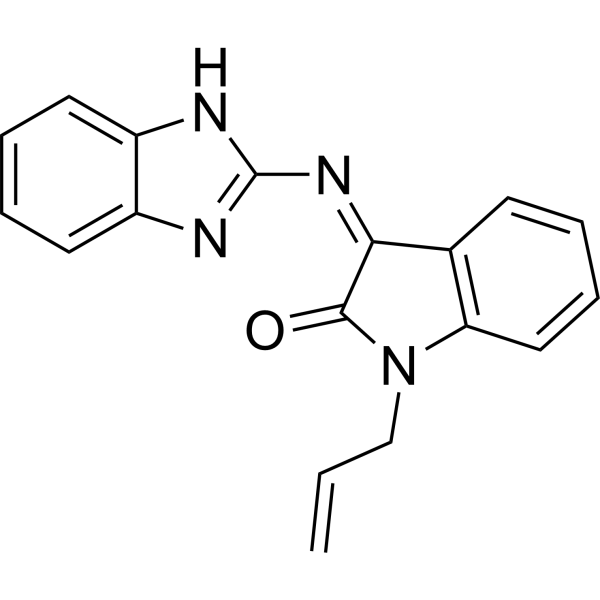
-
- HY-148246
-
|
|
TGF-β Receptor
|
Cancer
|
|
MU1700 is an orally active and potent ALK1/2 inhibitor with IC50s of 13 nM and 6 nM, respectively. MU1700 shows cell membrane permeability and high brain permeability .
|
-
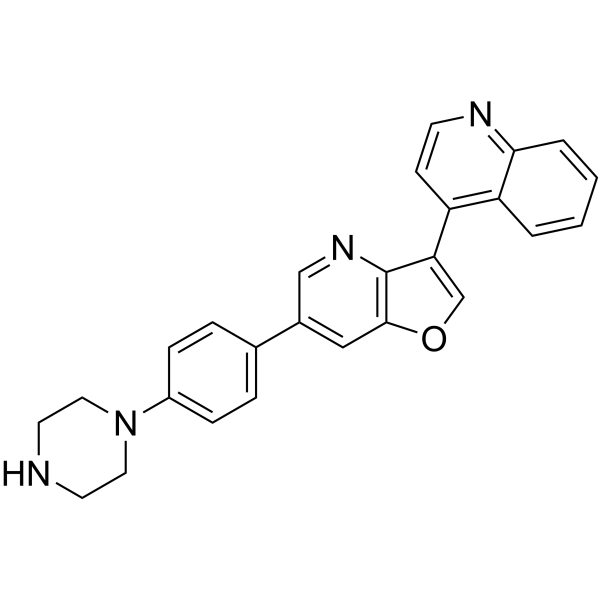
-
- HY-133898
-
|
TAK-925
|
Orexin Receptor (OX Receptor)
|
Others
|
|
Danavorexton (TAK-925) is an orexin receptor agonist with brain permeability. Danavorexton induces a physiological pattern of OX2R activation in vitro to wake up sleepy mice and improve sleepiness symptoms .
|
-
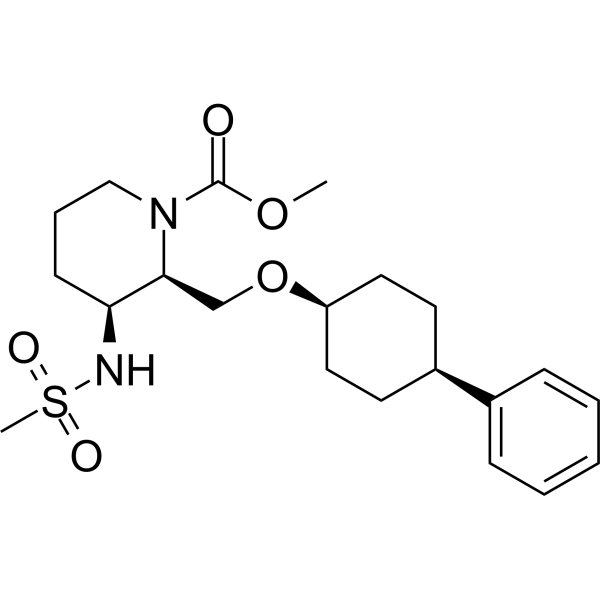
-
- HY-110176
-
|
|
GlyT
|
Neurological Disease
|
|
ASP2535 is a potent, orally bioavailable, selective, brain permeable and centrally-active glycine transporter-1 (GlyT1) inhibitor. ASP2535 can improve cognitive impairment in animal models of schizophrenia and Alzheimer's disease .
|
-
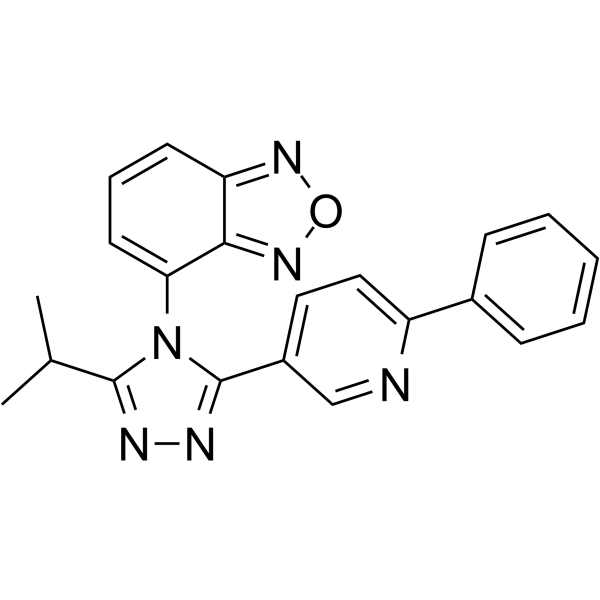
-
- HY-161377
-
|
|
TGF-β Receptor
|
Cancer
|
|
M4K2306 is a selective inhibitor for activin receptor-like kinase-2 (ALK2) with an IC50 of 7 nM. M4K2306 is blood brain permeable with a brain to plasma ratio of 75.6 .
|
-
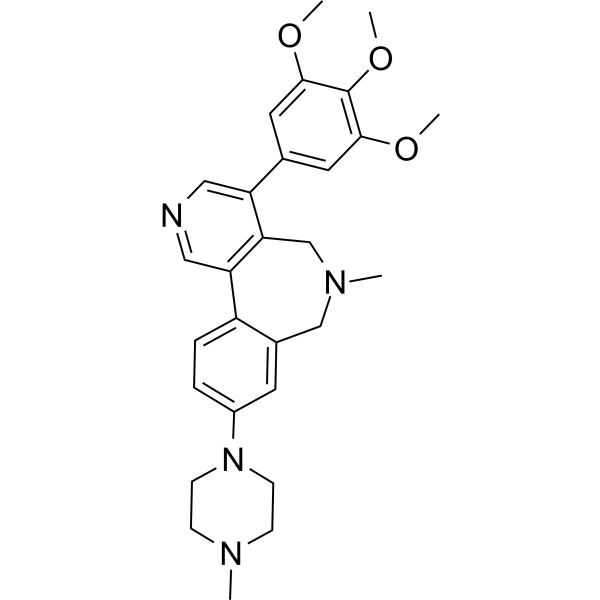
-
- HY-161116
-
|
|
Others
|
Cancer
|
|
AD-5584 is an ACSS2 inhibitor with blood-brain permeability. AD-5584 can significantly reduce lipid storage, reduce colony formation, and increase cell death. AD-5584 has antitumor activity .
|
-
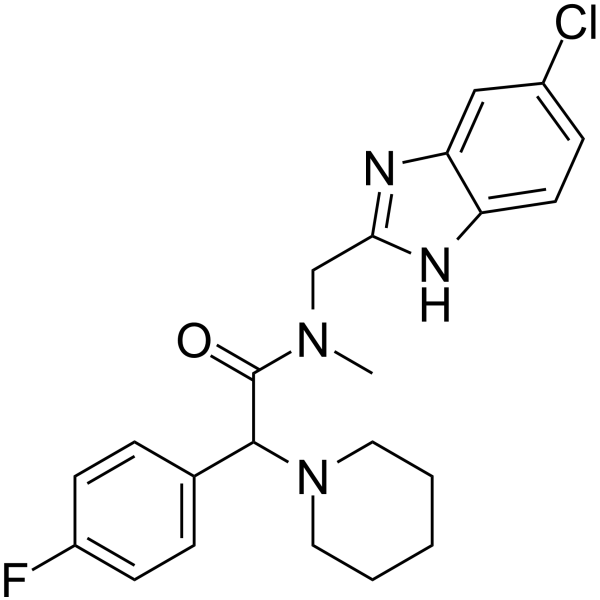
-
- HY-129545
-
|
|
Isocitrate Dehydrogenase (IDH)
|
Cancer
|
|
DS-1001b is an orally active, blood-brain permeable, potent IDH-1 (isocitrate dehydrogenase-1) mutant inhibitor. DS-1001b has antitumor activity .
|
-
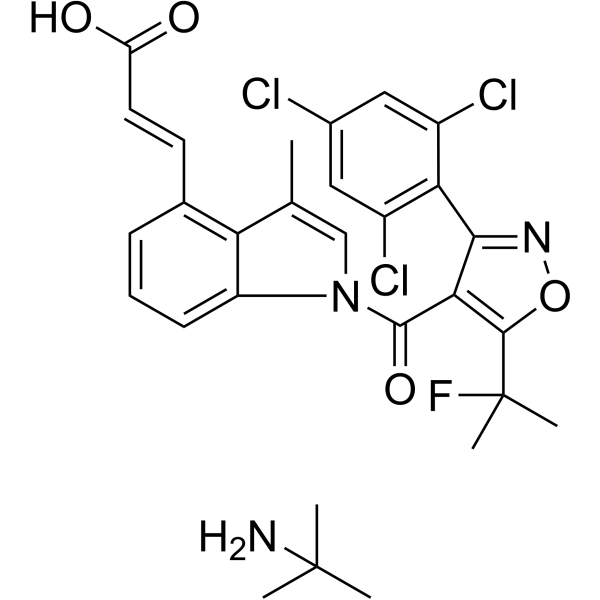
-
- HY-162235
-
|
|
Orexin Receptor (OX Receptor)
|
|
|
CVN766 is an orally active inhibitor of orexin 1 receptor antagonist with blood-brain permeability with the IC50 values of 8 nM and >10 μM for OX1R and OX2R, respectively. CVN766 can be used for study schizophrenia .
|
-
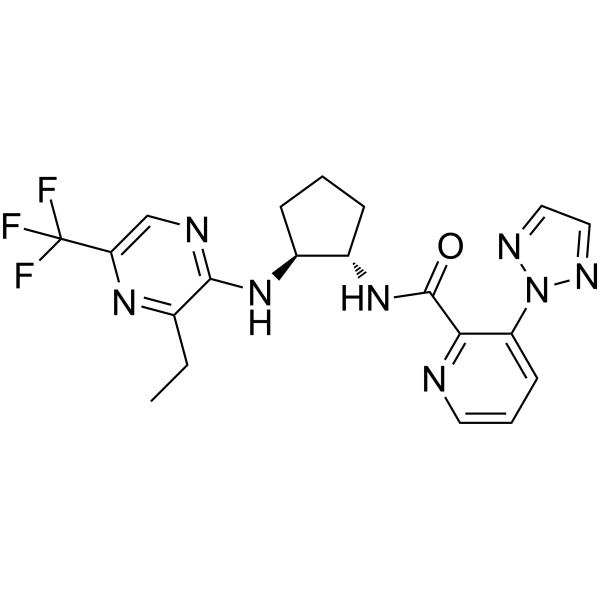
-
- HY-161376
-
|
|
TGF-β Receptor
|
Cancer
|
|
M4K2281 is a selecitve inhibitor for activin receptor-like kinase-2 (ALK2) with an IC50 of 2 nM. M4K2281 exhibits a moderate blood brain permeability with a brain to plasma ratio of 3.7 at 4h .
|
-
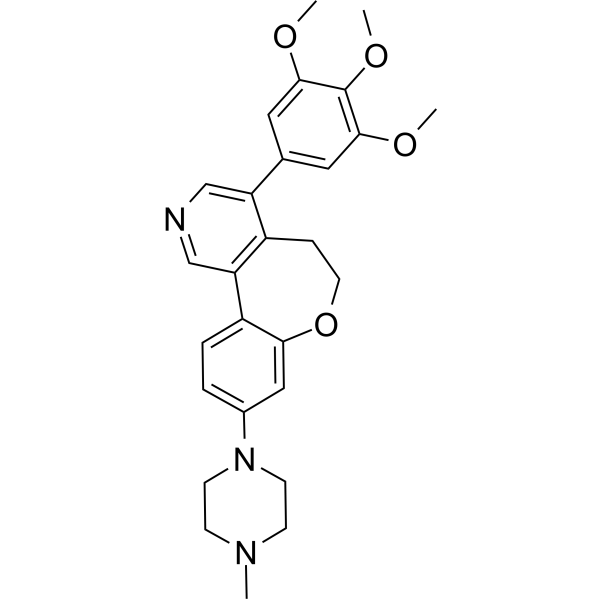
-
- HY-B0762S
-
|
O-Acetyl-L-carnitine-d3 (hydrochloride)
|
Endogenous Metabolite
|
Neurological Disease
|
|
Acetyl-L-carnitine-d3 (hydrochloride) is the deuterium labeled Acetyl-L-carnitine hydrochloride. Acetyl-L-carnitine hydrochloride is a blood-brain permeable acetyl ester of the amino acid L-carnitine found in the body. Acetyl-L-carnitine hydrochloride is often used as a dietary supplement, and exibits anti-stress-related psychiatric disorders[1].
|
-

-
- HY-B0762S1
-
|
O-Acetyl-L-carnitine-d3-1 (hydrochloride)
|
Endogenous Metabolite
|
Neurological Disease
|
|
Acetyl-L-carnitine-d3-1 (hydrochloride) is the deuterium labeled Acetyl-L-carnitine hydrochloride. Acetyl-L-carnitine hydrochloride is a blood-brain permeable acetyl ester of the amino acid L-carnitine found in the body. Acetyl-L-carnitine hydrochloride is often used as a dietary supplement, and exibits anti-stress-related psychiatric disorders[1].
|
-
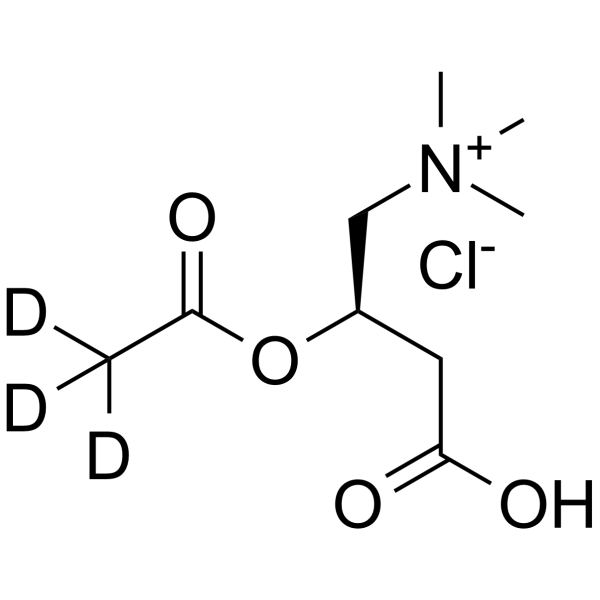
-
- HY-B0762R
-
|
O-Acetyl-L-carnitine hydrochloride (Standard); ALCAR hydrochloride (Standard)
|
Endogenous Metabolite
|
Neurological Disease
Cancer
|
|
Acetyl-L-carnitine (hydrochloride) (Standard) is the analytical standard of Acetyl-L-carnitine (hydrochloride). This product is intended for research and analytical applications. Acetyl-L-carnitine (O-Acetyl-L-carnitine) hydrochloride is a blood-brain permeable acetyl ester of the amino acid L-carnitine found in the body. Acetyl-L-carnitine hydrochloride is often used as a dietary supplement, and exibits anti-stress-related psychiatric disorders .
|
-
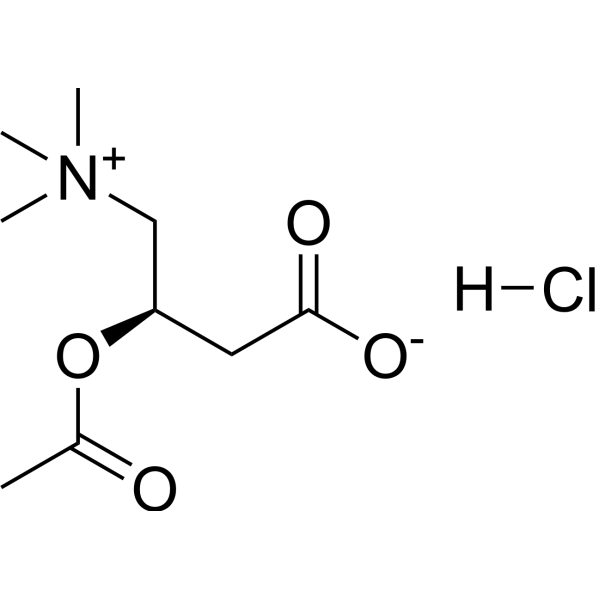
-
- HY-111274
-
|
Indometacin farnesil
|
COX
Autophagy
|
Inflammation/Immunology
|
|
Indomethacin farnesil is an orally active proagent of Indomethacin. Indomethacin (Indometacin) is a potent, blood-brain permeable and nonselective inhibitor of COX1 and COX2, with IC50s of 18 nM and 26 nM for human COX-1 and COX-2, respectively, in CHO cells. Indomethacin disrupts autophagic flux by disturbing the normal functioning of lysosomes .
|
-
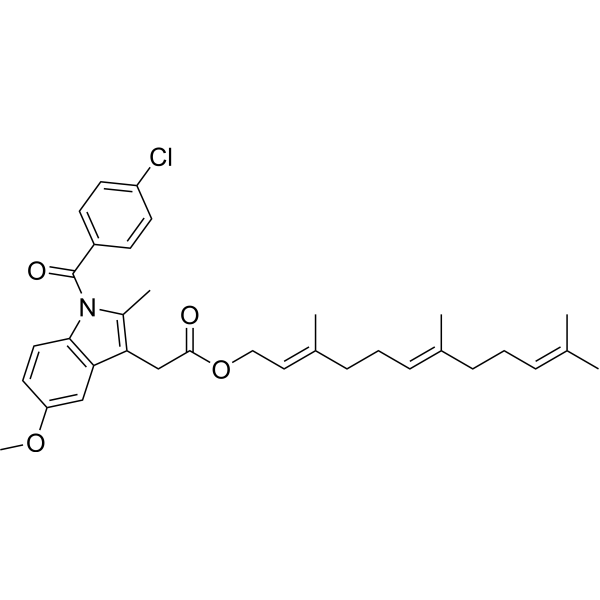
-
- HY-14397S
-
|
Indometacin-d4
|
Isotope-Labeled Compounds
COX
Autophagy
|
Inflammation/Immunology
Cancer
|
|
Indomethacin-d4 is a deuterium labeled Indomethacin. Indomethacin is a potent, blood-brain permeable and nonselective inhibitor of COX1 and COX2, with IC50s of 18 nM and 26 nM for human COX-1 and COX-2, respectively, in CHO cells[1]. Indomethacin disrupts autophagic flux by disturbing the normal functioning of lysosomes[2].
|
-

-
- HY-149143
-
|
|
TRP Channel
|
Inflammation/Immunology
|
|
JNJ-28583113 is an TRPM2 antagonist with brain permeability. JNJ-28583113 inhibits TRPM2 blocked phosphorylation of GSK3α and β subunits. JNJ-28583113 protects cells from oxidative stress induced cell death. JNJ-28583113 also suppresses cytokine release in response to pro-inflammatory stimuli in microglia .
|
-
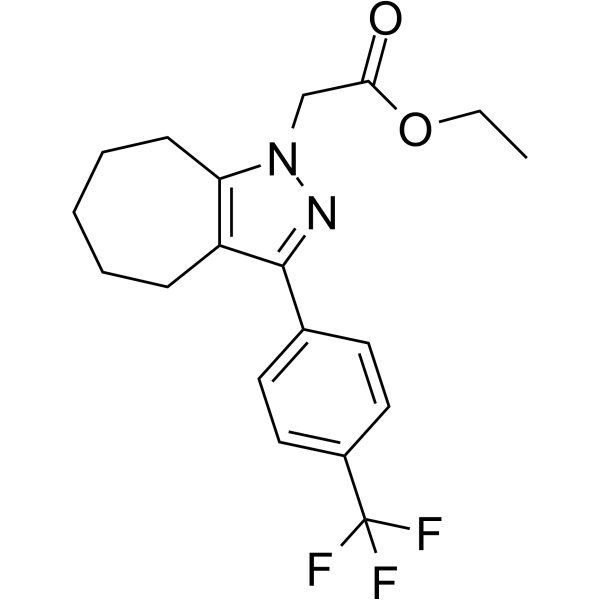
-
- HY-156168
-
|
|
Caspase
|
Cancer
|
|
M109S is a novel small molecule protecting cells from mitochondria-dependent apoptosis both in vitro and in vivo. M109S has the potential to become a research tool for studying cell death mechanisms and to develop therapeutics targeting mitochondria-dependent cell death pathway. M109S has orally bioactivity with excellent brain permeability .
|
-

-
- HY-14397S1
-
|
|
COX
Autophagy
|
Inflammation/Immunology
Cancer
|
|
Indomethacin-d4 Methyl Ester is the deuterium labeled Indomethacin. Indomethacin (Indometacin) is a potent, blood-brain permeable and nonselective inhibitor of COX1 and COX2, with IC50s of 18 nM and 26 nM for human COX-1 and COX-2, respectively, in CHO cells[1]. Indomethacin disrupts autophagic flux by disturbing the normal functioning of lysosomes[2].
|
-

-
- HY-143330
-
|
|
Monoamine Oxidase
|
Neurological Disease
|
|
MAO-B-IN-4 (Compound 26) is an orally active and reversible MAO-B inhibitor with an IC50 of 9 nM. MAO-B-IN-4 has good metabolic stability, safety profile and brain permeability. MAO-B-IN-4 shows antidepressant activity in rats and mice. MAO-B-IN-4 can be used in studies related to Alzheimer's disease .
|
-
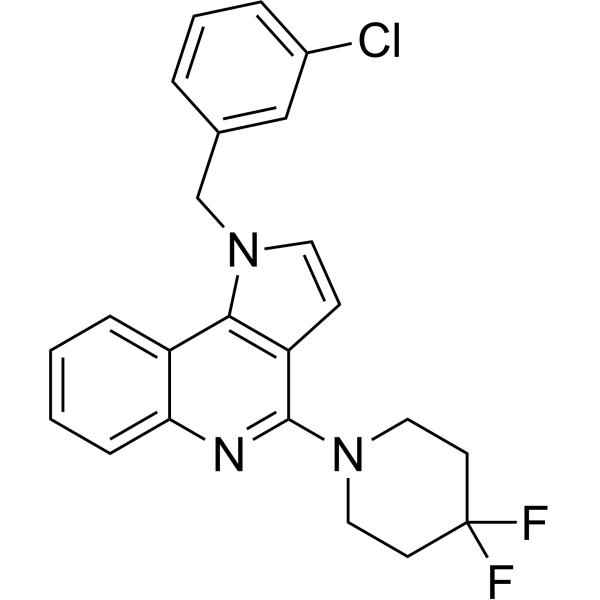
-
- HY-105670A
-
|
|
nAChR
|
Neurological Disease
|
|
PHA-543613 hydrochloride is an oral or active α7 nAChR agonist with brain permeability, For α3β4, α1β1γδ, α4β2 and 5-HT3 receptors selective. PHA-543613 hydrochloride affects sensory gating and memory in an in vivo model of schizophrenia .
|
-
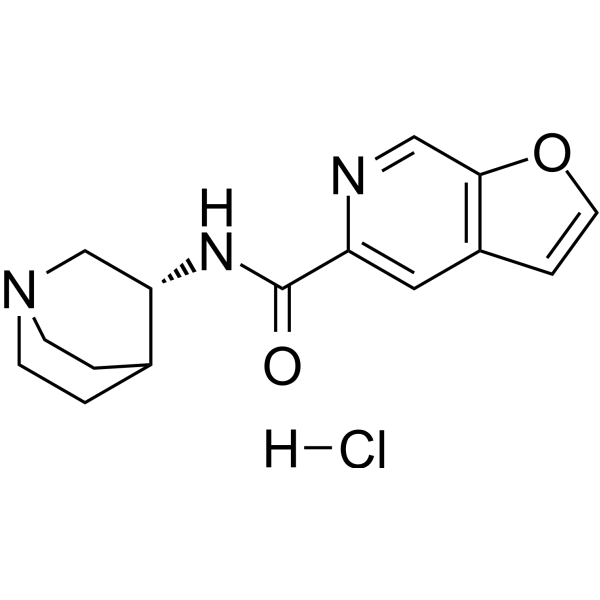
-
- HY-14405A
-
|
GW679769B
|
Neurokinin Receptor
Cytochrome P450
|
Neurological Disease
Cancer
|
|
Casopitant mesylate (GW679769B) is a potent, selective, brain permeable and orally active neurokinin 1 (NK1) receptor antagonist. Casopitant mesylate is a second in the class of antiemetics that acts to antagonise the emetogenic effect of substance P. Casopitant mesylate is also a substrate and a weak-to-moderate inhibitor of CYP3A4. Casopitant mesylate can be used for chemotherapy-induced nausea and vomiting (CINV) and postoperative nausea and vomiting (PONV) .
|
-
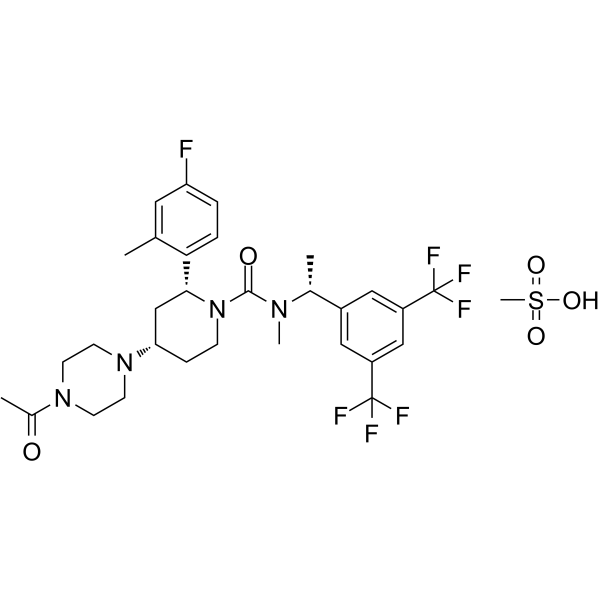
-
- HY-155534
-
|
|
Endogenous Metabolite
|
Others
|
|
17β-HSD10-IN-1 (compound 9) is an orally active inhibitor of 17β-hydroxysteroid dehydrogenase type 10 (17β-HSD10) with blood-brain permeability. 17β-HSD10-IN-1 doesn't result additional effects for mitochondrial off-targets and cytotoxic or neurotoxic effects .
|
-
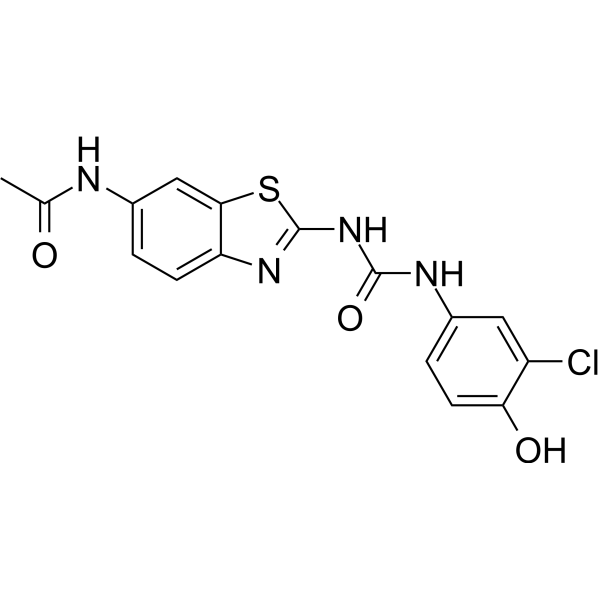
-
- HY-118858
-
|
|
EAAT
|
Neurological Disease
Cancer
|
|
UCPH-102 is a highly selective EAAT1 inhibitor with an IC50 of 0.43 µM. UCPH-102 exhibits a specific anti-proliferative effect on T-ALL cells. UCPH-102 also shows good blood-brain permeability, which can be used in studies of amyotrophic lateral sclerosis, Alzheimer’s disease, chronic pain and obsessive compulsive disorder .
|
-

-
- HY-W018643
-
|
Methyl ferulate
|
p38 MAPK
Autophagy
|
Neurological Disease
Inflammation/Immunology
Cancer
|
|
Ferulic acid methyl ester (Methyl ferulate) is a derivative of ferulic acid, isolated from Stemona tuberosa, with anti-inflammatory and antioxidant properties . Ferulic acid methyl ester is a cell membrane and brain permeable compound, shows free radical scavenging ability, used in the research of neurodegenerative disorders . Ferulic acid methyl ester inhibits COX-2 expression, blocks p-p38 and p-JNK in primary bone marrow derived-macrophages .
|
-
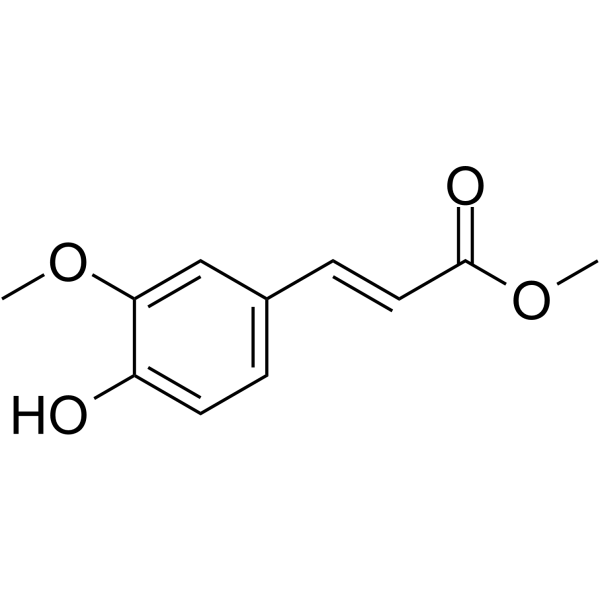
-
- HY-119190
-
|
|
Phosphodiesterase (PDE)
|
Neurological Disease
|
|
PF-06445974, a promising positron emission tomography (PET) lead, has exquisite potency at PDE4B with an IC50 <1 nM. The IC50 values are 36, 4.7 and 17 nM for PDE4D, PDE4A and PDE4C, respectively. PF-06445974 has good selectivity over PDE4D, excellent brain permeability, and a high level of specific binding in the "cold tracer" study .
|
-
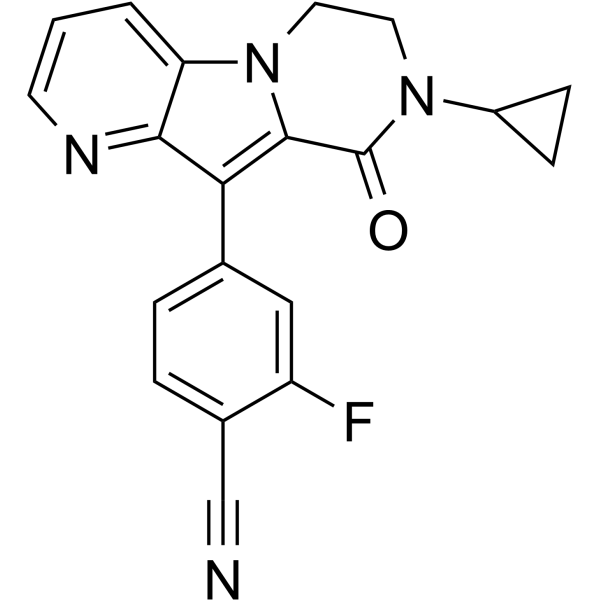
- HY-P99797
-
|
JR-141
|
Transferrin Receptor
|
Neurological Disease
|
|
Pabinafusp alfa (JR-141) is a transferrin receptor-targeting antibody consisting of Iduronate 2-sulfatase (HY-P76399) and an anti-human transferrin receptor antibody. Pabinafusp alfa is blood-brain permeable and prevents heparan sulfate (HS) deposition in the central nervous system of mucopolysaccharidosis II (MPS II) mice. Pabinafusp alfa improves learning and prevents central nervous system neuronal damage in mice .
|
-

- HY-149287
-
|
|
Cholinesterase (ChE)
|
Neurological Disease
|
|
hAChE/hBACE-1-IN-1 (compounds 5d) is an orally active inhibitor of hAChE with blood-brain permeability. hAChE/hBACE-1-IN-1 inhibits hAChE and hBACE-1 with IC50 values of 0.076 and 0.23 μM, respectively. hAChE/hBACE-1-IN-1 inhibits Aβ1-42 aggregation and improves mouse learning and memory ability. hAChE/hBACE-1-IN-1 can be used to research in Alzheimer's disease .
|
-
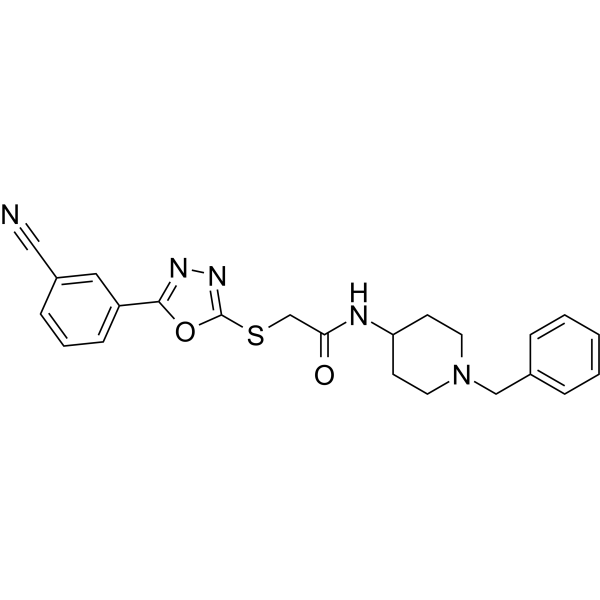
- HY-149054
-
|
|
GSK-3
Tau Protein
AAK1
Pim
PKC
|
Neurological Disease
|
|
GSK-3β inhibitor 13 (compound 47) is an orally active and potent GSK-3β inhibitor with blood-brain permeability. GSK-3β inhibitor 13 inhibits GSK-3β and GSK-3α with IC50s of 0.73 nM and 0.35 nM, respectively. GSK-3β inhibitor 13 significantly decreases the phosphorylation of tau (IC50=58 nM), which leads the formation of the neurofibrillary tangles associated with Alzheimer's disease .
|
-

- HY-107664
-
|
|
Neurotensin Receptor
|
Neurological Disease
|
|
SR 142948 is an orally active and selective non-peptide neurotensin receptor (NT) antagonist with IC50s of 1.19 nM, 0.32 nM, 3.96 nM in h-NTR1-CHO cells, HT-29 cells, and adult rat brain, respectively. SR 142948 antagonizes NT-induced inositol monophosphate formation in HT-29 cells with an IC50 of 3.9 nM. SR 142948 blocks hypothermia, analgesia and steering behavior induced by NT in vivo. SR 142948 shows blood-brain permeability and can be used in study of psychiatric disorders .
|
-

- HY-107664A
-
|
|
Neurotensin Receptor
|
Neurological Disease
|
|
SR 142948 dihydrochloride is an orally active and selective non-peptide neurotensin receptor (NT) antagonist with IC50s of 1.19 nM, 0.32 nM, 3.96 nM in h-NTR1-CHO cells, HT-29 cells, and adult rat brain, respectively. SR 142948 dihydrochloride antagonizes NT-induced inositol monophosphate formation in HT-29 cells with an IC50 of 3.9 nM. SR 142948 dihydrochloride blocks hypothermia, analgesia and steering behavior induced by NT in vivo. SR 142948 dihydrochloride shows blood-brain permeability and can be used in study of psychiatric disorders .
|
-

- HY-103430
-
|
|
Dopamine Receptor
5-HT Receptor
Adenylate Cyclase
|
Neurological Disease
|
|
SKF-83566 hydrobromide is a potent, blood-brain permeable and orally active D1-like dopamine receptor (D1DR) antagonist and a weaker competitive antagonist at the vascular 5-HT2 receptor (Ki=11 nM) . SKF-83566 is a competitive DAT (dopamine transporter) inhibitor with an IC50 of 5.7 μM . SKF-83566 also shows selective inhibition for adenylyl cyclase 2 (AC2) over AC1 and AC5 in the isolated rabbit thoracic aorta . SKF-83566 can be used for the research of parkinson’s disease and nicotine craving alleviation .
|
-
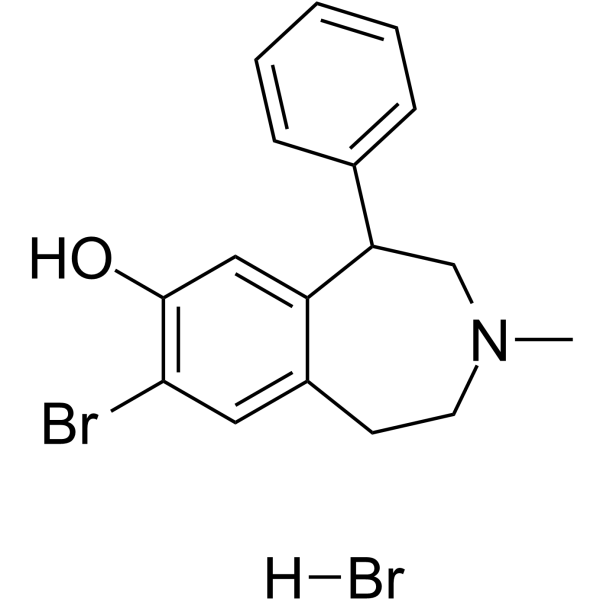
- HY-103430A
-
|
|
Dopamine Receptor
5-HT Receptor
Adenylate Cyclase
|
Neurological Disease
|
|
SKF-83566 is a potent, blood-brain permeable and orally active D1-like dopamine receptor (D1DR) antagonist and a weaker competitive antagonist at the vascular 5-HT2 receptor (Ki=11 nM) . SKF-83566 is a competitive DAT (dopamine transporter) inhibitor with an IC50 of 5.7 μM . SKF-83566 also shows selective inhibition for adenylyl cyclase 2 (AC2) over AC1 and AC5 in the isolated rabbit thoracic aorta . SKF-83566 can be used for research of parkinson’s disease and nicotine craving alleviation .
|
-
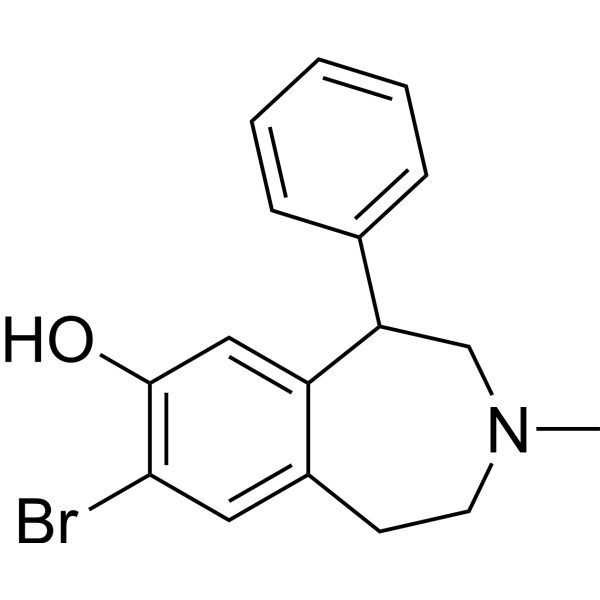
| Cat. No. |
Product Name |
Target |
Research Area |
-
- HY-P99797
-
|
JR-141
|
Transferrin Receptor
|
Neurological Disease
|
|
Pabinafusp alfa (JR-141) is a transferrin receptor-targeting antibody consisting of Iduronate 2-sulfatase (HY-P76399) and an anti-human transferrin receptor antibody. Pabinafusp alfa is blood-brain permeable and prevents heparan sulfate (HS) deposition in the central nervous system of mucopolysaccharidosis II (MPS II) mice. Pabinafusp alfa improves learning and prevents central nervous system neuronal damage in mice .
|
| Cat. No. |
Product Name |
Category |
Target |
Chemical Structure |
-
- HY-B0762
-
|
O-Acetyl-L-carnitine hydrochloride; ALCAR hydrochloride
|
Alkaloids
Source classification
Endogenous metabolite
|
Endogenous Metabolite
|
|
Acetyl-L-carnitine (O-Acetyl-L-carnitine) hydrochloride is a blood-brain permeable acetyl ester of the amino acid L-carnitine found in the body. Acetyl-L-carnitine hydrochloride is often used as a dietary supplement, and exibits anti-stress-related psychiatric disorders .
|
-

-
- HY-155534
-
-

-
- HY-W018643
-
-

-
- HY-B0762R
-
|
O-Acetyl-L-carnitine hydrochloride (Standard); ALCAR hydrochloride (Standard)
|
Structural Classification
Alkaloids
Source classification
Endogenous metabolite
|
Endogenous Metabolite
|
|
Acetyl-L-carnitine (hydrochloride) (Standard) is the analytical standard of Acetyl-L-carnitine (hydrochloride). This product is intended for research and analytical applications. Acetyl-L-carnitine (O-Acetyl-L-carnitine) hydrochloride is a blood-brain permeable acetyl ester of the amino acid L-carnitine found in the body. Acetyl-L-carnitine hydrochloride is often used as a dietary supplement, and exibits anti-stress-related psychiatric disorders .
|
-

| Cat. No. |
Product Name |
Chemical Structure |
-
- HY-B0762S
-
|
|
|
Acetyl-L-carnitine-d3 (hydrochloride) is the deuterium labeled Acetyl-L-carnitine hydrochloride. Acetyl-L-carnitine hydrochloride is a blood-brain permeable acetyl ester of the amino acid L-carnitine found in the body. Acetyl-L-carnitine hydrochloride is often used as a dietary supplement, and exibits anti-stress-related psychiatric disorders[1].
|
-

-
- HY-B0762S1
-
|
|
|
Acetyl-L-carnitine-d3-1 (hydrochloride) is the deuterium labeled Acetyl-L-carnitine hydrochloride. Acetyl-L-carnitine hydrochloride is a blood-brain permeable acetyl ester of the amino acid L-carnitine found in the body. Acetyl-L-carnitine hydrochloride is often used as a dietary supplement, and exibits anti-stress-related psychiatric disorders[1].
|
-

-
- HY-14397S1
-
|
|
|
Indomethacin-d4 Methyl Ester is the deuterium labeled Indomethacin. Indomethacin (Indometacin) is a potent, blood-brain permeable and nonselective inhibitor of COX1 and COX2, with IC50s of 18 nM and 26 nM for human COX-1 and COX-2, respectively, in CHO cells[1]. Indomethacin disrupts autophagic flux by disturbing the normal functioning of lysosomes[2].
|
-

-
- HY-14397S
-
|
|
|
Indomethacin-d4 is a deuterium labeled Indomethacin. Indomethacin is a potent, blood-brain permeable and nonselective inhibitor of COX1 and COX2, with IC50s of 18 nM and 26 nM for human COX-1 and COX-2, respectively, in CHO cells[1]. Indomethacin disrupts autophagic flux by disturbing the normal functioning of lysosomes[2].
|
-

| Cat. No. |
Product Name |
|
Classification |
-
- HY-131036
-
|
|
|
Alkynes
|
|
MAO-IN-M30 dihydrochloride is an orally active, brain-permeable, and brain selective irreversible MAO-A (IC50=37 nM) and MAO-B (IC50=57 nM) inhibitor. MAO-IN-M30 dihydrochloride is a potent iron chelator and radical scavenger. MAO-IN-M30 dihydrochloride has a neuroprotective effect against Dexamethasone-induced brain cell apoptosis. MAO-IN-M30 dihydrochloride also exhibits neurorestorative activity in post MPTP and lactacystin models of Parkinson's disease . MAO-IN-M30 (dihydrochloride) is a click chemistry reagent, it contains an Alkyne group and can undergo copper-catalyzed azide-alkyne cycloaddition (CuAAc) with molecules containing Azide groups.
|
-
- HY-151391
-
|
|
|
Alkynes
|
|
LPA5 antagonist 1 (Compound 66) is a potent and selective lysophosphatidic acid receptor 5 (LPA5) antagonist (IC50=32 nM). LPA5 antagonist 1 shows high brain permeability and anti-nociceptive activity. LPA5 antagonist 1 can be used in inflammatory and neuropathic pain research . LPA5 antagonist 1 is a click chemistry reagent, it contains an Alkyne group and can undergo copper-catalyzed azide-alkyne cycloaddition (CuAAc) with molecules containing Azide groups.
|
Your information is safe with us. * Required Fields.
Inquiry Information
- Product Name:
- Cat. No.:
- Quantity:
- MCE Japan Authorized Agent:

































































